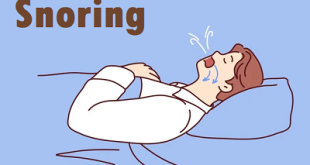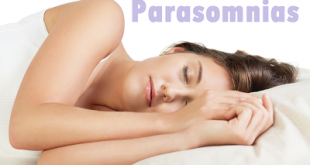Orthopnea definition
Orthopnea is the shortness of breath that happens while a person lying flat. The shortness of breath is followed by a tightness feeling in the chest and the feeling is as if he or she is not able to get enough oxygen for proper breathing. This occurs usually at night when a person is asleep. It is usually seen as a late demonstration of heart failure, causing an increase in pulmonary capillary pressure. It is likewise seen in cases of abdominal obesity or pulmonary disease. For this reason, anyone who experiences orthopnea should always be assessed by a physician.
When a person is lying down, there is increased pressure in the veins that connect the heart to the lungs. It would be difficult for the lungs to properly function, thereby leading to shortness of breath in an individual. Other symptoms associated with orthopnea include intermittent pain in the chest and edema in lower extremities.
People who are overweight have higher chances of experiencing orthopnea. Even pregnant women are equally at risk of developing this condition, which is why the proper monitoring of the signs and symptoms of orthopnea is important.
Orthopnea differs from dyspnea, which is shortness of breath during non-strenuous activities. Basically, you would have difficulty breathing no matter your position or level of activity.
Types of orthopnea
Besides orthopnea, there are other variations of shortness of breath or breathlessness. For instance, platypnea leads to shortness of breath when standing. Trepopnea is a type of shortness of breath experienced when lying on your side.
Moreover, paroxysmal nocturnal dyspnea is shortness of breath that will wake you up, often after an hour or two of sleep. It is also often relieved by assuming an upright position.
Other than these variations, orthopnea types will include:
Pediatric orthopnea: This type occurs in infants and children below age 12. Children may have difficulty breathing due to an improper lying down position.
Orthopnea during pregnancy: In pregnant women, conditions that lead to orthopnea include severe anemia, fluid overload, heart failure, and peripartum cardiomyopathy.
Cardiac orthopnea: This is where left-sided congestive heart failure is the cause of orthopnea. People with left-sided congestive heart failure may experience relief when right-sided congestive heart failure instead becomes an issue.
Causes of orthopnea
The condition is caused by an increased blood flow to the pulmonary (lungs) area of the body.
When a person lies down, blood flows toward the lungs and heart. This isn’t a problem in a healthy person, but if your heart is weak then it may struggle to redistribute this extra blood in the area around the lungs.
This extra blood flow causes the pressure in the blood vessels (veins & capillaries) of the lungs to increase. The increased pressure in the blood vessels causes fluid to leak into the lungs. This fluid makes it difficult to breathe as the lungs are being reduced in capacity.
Orthopnea can be a symptom of numerous diseases that concern the heart and lungs. We mentioned that a weakness of the heart means that the lungs are affected by the fluid. However, lung diseases that produce mucus are also a cause. This is due to the difficulty in clearing the mucus when in a recumbent position (lying down).
Illnesses that can cause orthopnea:
- Left ventricular heart failure
- Pulmonary edema (difficulty in breathing caused by excess fluid in the lungs)
- Chronic bronchitis
- Severe asthma
- Severe pneumonia
- Obesity
- Paralysis of the diaphragm
- Pleural effusion (fluid in the lungs)
- Ascites (fluid in the abdominal cavity)
Positions that causes orthopneic
Orthopnea is only applicable when in certain positions. Broadly categorized by being horizontal, the different variations are as follows:
- Supine: Lying down facing upwards
- Prone: Lying down facing downwards
- Left Lateral Recumbent and Right Lateral Recumbent: Lying down facing sideways
Symptoms of orthopnea
Aside from a difficulty in breathing, the typical symptoms of orthopnea include:
- Persistent coughing
- Intermittent tightness in the chest region
- Swelling of the ankles and feet
- Pedal edema
- Paroxysmal nocturnal dyspnea
- Hoarseness
- Cyanosis
- Dysphasia
- Palpitations
Complications of orthopnea
Orthopnea is often a symptom of the condition called pulmonary edema. In this condition, fluid accumulates in the lungs due to increased pressure.
Another complication associated with orthopnea is heart failure. The pulmonary circulation may be overloaded in patients who suffer from congestive heart failure. The symptoms are usually improved when the person changes to an erect position.
Orthopnea diagnosis and test
As orthopnea is usually a symptom of another condition, such as heart failure, a doctor will focus on trying to identify the underlying cause. The doctor may begin with a physical examination to check the severity and timing of breathing difficulties. They will also ask about other symptoms and review the person’s medical history.
Depending on the suspected cause, the doctor may recommend one or more of the following tests:
X-ray or CT scan of the chest: These tests create an image of the inside of the chest, which allows the doctor to see if there are any problems with the lungs or heart.
Electrocardiogram (ECG): This test involves placing sensors on a person’s skin to measure electrical signals from the heart. Doctors use an ECG to check the functioning of the heart.
Echocardiogram: Also known as an “echo,” this is a type of ultrasound scan that uses sound waves to create an image of the heart. Doctors use this test to check for any problems with this organ.
Pulmonary function tests: These tests include spirometry, which involves breathing into a machine. A doctor can use the results to determine how well the lungs are functioning.
Arterial blood gas: This is a type of blood test that checks whether a person is getting enough oxygen.
Blood tests: These involve taking a small sample of a person’s blood, and doctors use them to check for signs of a wide range of conditions.
Treatment for orthopnea
To relieve shortness of breath, prop yourself up against one or more pillows. This should help you breathe more easily. You may also need supplemental oxygen, either at home or in a hospital.
Once your doctor diagnoses the cause of your orthopnea, you’ll get treated. Doctors treat heart failure with medication, surgery, and devices.
In general, people with Orthopnea are advised to sleep in a slightly more upright position, like with a few pillows below their head, or even a tilting bed. However, this only helps get rid of the discomfort, not the underlying problem.
Patient lying down in a tilted position
In order to reduce fluid accumulation, doctors may prescribe diuretics, which are medicines that help the body get rid of excess water and fluids. A reduction in sodium intake also contributes to decreasing fluid accumulation.
Medications for orthopnea
Medications that relieve orthopnea in people with heart failure include:
Diuretics: These medications prevent fluid from building up in your body. Drugs like furosemide (Lasix) stop fluid from building up in your lungs.
Angiotensin-converting enzyme (ACE) inhibitors: These drugs are recommended for people with left-sided heart failure. They improve blood flow and prevent the heart from having to work as hard. ACE inhibitors include captopril (Capoten), enalapril (Vasotec), and lisinopril (Zestril).
Beta-blockers are also recommended for people with heart failure. Depending upon how severe your heart failure is, there are other medications that your doctor may prescribe as well.
If you have Chronic Obstructive Pulmonary Disease (COPD), your doctor will prescribe medications that relax the airways and reduce inflammation in the lungs. These include:
- Bronchodilators like albuterol (ProAir HFA, Ventolin HFA), ipratropium (Atrovent), salmeterol (Serevent), and tiotropium (Spiriva)
- Inhaled steroids such as budesonide (Pulmicort Flexhaler, Uceris), fluticasone (Flovent HFA, Flonase)
- Combinations of bronchodilators and inhaled steroids, such as formoterol and budesonide (Symbicort) and salmeterol and fluticasone (Advair)
You might also need supplemental oxygen to help you breathe while you sleep.
 Diseases Treatments Dictionary This is complete solution to read all diseases treatments Which covers Prevention, Causes, Symptoms, Medical Terms, Drugs, Prescription, Natural Remedies with cures and Treatments. Most of the common diseases were listed in names, split with categories.
Diseases Treatments Dictionary This is complete solution to read all diseases treatments Which covers Prevention, Causes, Symptoms, Medical Terms, Drugs, Prescription, Natural Remedies with cures and Treatments. Most of the common diseases were listed in names, split with categories.








I have felt less sensivity in my left hand finger, pls give me suggesion
It may be carpal tunnel syndrome or the nerves that travel to palm may be pinged due to stress.
I am not getting sound sleep during night and find it difficult to fell in to sleep.
Even after falling in to sleep by late night, woke up suddenly just after 45 mts- 1 Hr., due to any side of the nasal block.
I had an angioplasty done, last year followed by a heart block in LAD.
Now using Bisoprolol-5mg, Ecospirin-75, Atorvastatin-20,Febuxostat-40,Clopidrogrel.75mg.tabs…& at times antiallergent tabs.
pl.advice for my problems.
prakash paul
Please consult a doctor to get rid of this problem.
what is the solution for snoring
Change Your Sleep Position.
Avoid Alcohol
Practice Good Sleep Hygiene.
Open Nasal Passages
Change Your Pillows
Stay Well Hydrated
I find it very difficult to breath even at day time, and at night, if I want to breath ,I need to stand or stay quiet before I can breath, pls I need ur help
If you have chest and shoulder pain kindly contact a cardiologist or if you’re suffering from lung illness kindly contact a pulmonologist for proper diagnosis of your problem.